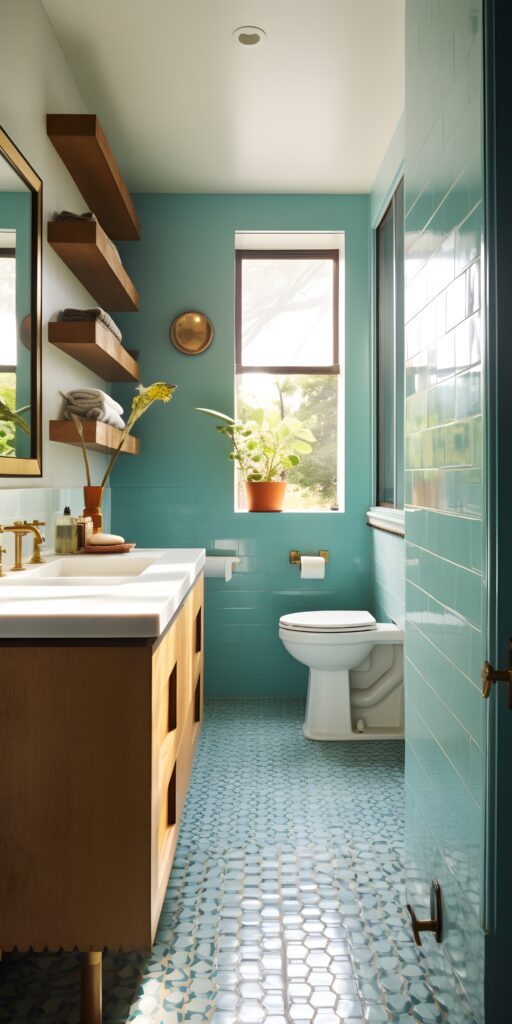A bathroom remodel is a significant investment that enhances both the functionality and aesthetic appeal of your home. Whether you’re upgrading a small guest bathroom or transforming a master bath into a luxurious retreat, understanding the cost factors involved is essential. Expenses can vary based on materials, labor, design complexity, and the size of the space. Proper budgeting helps prevent unexpected costs and ensures you get the best value for your investment.
Factors like plumbing, electrical work, and fixture choices can greatly impact the overall price. Before starting a bathroom remodel, it’s crucial to evaluate your priorities and make informed decisions to stay within your budget. By breaking down the key cost considerations, homeowners can better plan their projects and achieve a balance between quality and affordability.
Understanding Material Costs in a Bathroom Remodel
The choice of materials plays a significant role in the overall cost of a bathroom remodel. Premium materials like natural stone, high end tiles, and custom cabinetry can quickly raise expenses. On the other hand, budget friendly alternatives such as porcelain tiles, laminate countertops, and prefabricated vanities offer durability without breaking the bank. Flooring, backsplashes, shower enclosures, and countertops all contribute to the final price.
It’s essential to balance aesthetics with practicality, ensuring that your selections align with your budget and long term maintenance expectations. Investing in high quality materials for high use areas like flooring and countertops can prevent frequent repairs or replacements. Additionally, shopping around for discounts and exploring wholesale options can help keep costs manageable. Homeowners should prioritize durability and style when making material choices for a well balanced and cost effective bathroom remodel.
How Labor Costs Impact a Bathroom Remodel Budget
Hiring skilled professionals is one of the biggest expenses in a bathroom remodel. The cost of labor depends on the complexity of the project, the level of expertise required, and local market rates. Plumbers, electricians, tile installers, and general contractors all contribute to the final labor cost. More intricate designs, custom features, or structural modifications often require specialized skills, increasing the budget. Additionally, labor costs can fluctuate based on demand, with peak renovation seasons leading to higher prices.
To keep expenses under control, homeowners should obtain multiple quotes, verify credentials, and ensure clear contracts before hiring professionals. While it may be tempting to cut costs on labor, investing in experienced contractors ensures highquality work, minimizing the risk of costly mistakes. Understanding labor costs is crucial for accurate budgeting in any bathroom remodel.
The Role of Plumbing and Electrical Work in a Bathroom Remodel
Plumbing and electrical upgrades can significantly influence the cost of a bathroom remodel. Relocating sinks, toilets, or showers requires additional piping and can lead to unexpected expenses, especially in older homes where outdated systems may need replacement. Similarly, upgrading electrical wiring to accommodate modern lighting, heated flooring, or additional outlets adds to the budget. Licensed professionals are required for these tasks, further increasing costs.
Homeowners should assess whether their current layout supports the desired updates or if extensive modifications are necessary. Planning around existing plumbing and electrical connections can help minimize expenses while still achieving a refreshed look. Safety is also a critical factor, as improper wiring or plumbing installations can lead to long term issues. Allocating a portion of the budget for these essential upgrades ensures a smooth and efficient bathroom remodel.
The Impact of Bathroom Size on Remodeling Costs
The size of a bathroom is a major factor in determining the overall cost of a bathroom remodel. Larger bathrooms typically require more materials, labor, and time to complete, resulting in higher expenses. From flooring and wall tiles to plumbing and electrical work, every aspect of the remodel scales with the room’s dimensions.
- Material Expenses Increase with Size : More square footage means more tiles, flooring, paint, and cabinetry, all of which contribute to higher costs.
- Labor Costs Scale with Complexity: Larger bathrooms require more installation work, plumbing adjustments, and electrical upgrades, leading to increased labor expenses.
- Fixture and Vanity Selection Matters: Bigger spaces often accommodate double vanities, larger showers, and luxury fixtures, adding to the budget.
- Plumbing and Electrical Upgrades : Expanding a bathroom may require new plumbing lines, additional lighting, or extra ventilation, increasing overall costs.
- Longer Project Timelines :A larger bathroom takes more time to renovate, which can lead to extended labor costs and potential delays in material availability.
Regardless of the bathroom’s size, strategic planning and budgeting can help homeowners control expenses while achieving their desired design. Whether updating a compact powder room or transforming a spacious master bath, working with experienced professionals ensures a smooth and cost effective bathroom remodel.
How Fixture and Vanity Choices Influence Bathroom Remodel Costs
Selecting fixtures and vanities is an important part of any bathroom remodel, and costs can vary widely based on quality, brand, and customization. High End brands and custom built vanities come with premium price tags, while stock options and midrange fixtures provide affordability without compromising style. Homeowners should also consider water efficient faucets and toilets, which may have a higher upfront cost but result in long term savings on utility bills.
Lighting, mirrors, and hardware also add to the final expenses. Choosing a vanity that complements the overall design while offering sufficient storage can enhance both functionality and aesthetics. Comparing different styles, materials, and finishes helps homeowners make informed choices that fit their budget and vision. Thoughtfully selecting fixtures and vanities ensures a balanced and cost effective bathroom remodel.
Permits and Inspections: Hidden Costs in a Bathroom Remodel
Many homeowners overlook permit and inspection fees when budgeting for a bathroom remodel. Depending on local regulations, permits may be required for plumbing, electrical work, and structural changes. The cost of these permits varies by location and project complexity, and failure to obtain them can lead to fines or project delays. Inspections ensure that all work meets safety codes and industry standards, preventing future issues that could lead to costly repairs.
Working with licensed professionals can help navigate the permitting process efficiently and avoid unexpected expenses. It’s advisable to research local permit requirements and include these fees in the overall budget to prevent financial surprises. Understanding the importance of permits and inspections ensures a smooth and legally compliant bathroom remodel.

How Timeline and Unexpected Costs Affect a Bathroom Remodel Budget
A well planned bathroom remodel requires careful budgeting, but delays and unforeseen expenses can quickly increase costs. Project timelines can be affected by factors such as material shortages, contractor availability, or unexpected structural issues like water damage or mold.
- Material Delays Can Stall Progress: Backordered tiles, custom vanities, or specialized fixtures can slow down the remodel and extend labor costs.
- Hidden Structural Issues Increase Expenses Discovering plumbing leaks, faulty wiring, or mold during demolition often leads to unplanned repairs.
- Permit Approvals May Take Time :Required permits for electrical, plumbing, or structural changes can delay construction and add fees.
- Labor Availability Can Affect Scheduling :High demand for skilled workers may cause scheduling conflicts, pushing back project completion.
- Change Orders Can Raise Costs :Mid Project design changes or upgrades lead to additional labor, material costs, and timeline extensions.
Planning ahead, working with experienced professionals, and setting aside a contingency budget can help homeowners navigate unexpected expenses and delays. By preparing for these challenges, a bathroom remodel can stay within budget while achieving high quality results.
Conclusion
A bathroom remodel is a rewarding investment that enhances comfort, functionality, and property value. By understanding cost factors such as materials, labor, plumbing, and permits, homeowners can plan effectively and avoid unexpected expenses. Careful budgeting ensures that every dollar is spent wisely, resulting in a beautifully renovated space that meets your needs.
Whether you’re updating a small bathroom or transforming a master bath, working with professionals helps streamline the process and guarantees quality results. If you’re ready to start your bathroom remodel, LJD Home Improvements is here to help. Contact us today at 6315092538 to discuss your project and receive expert guidance. Let’s bring your vision to life with a well planned, high quality remodel tailored to your style and budget.
